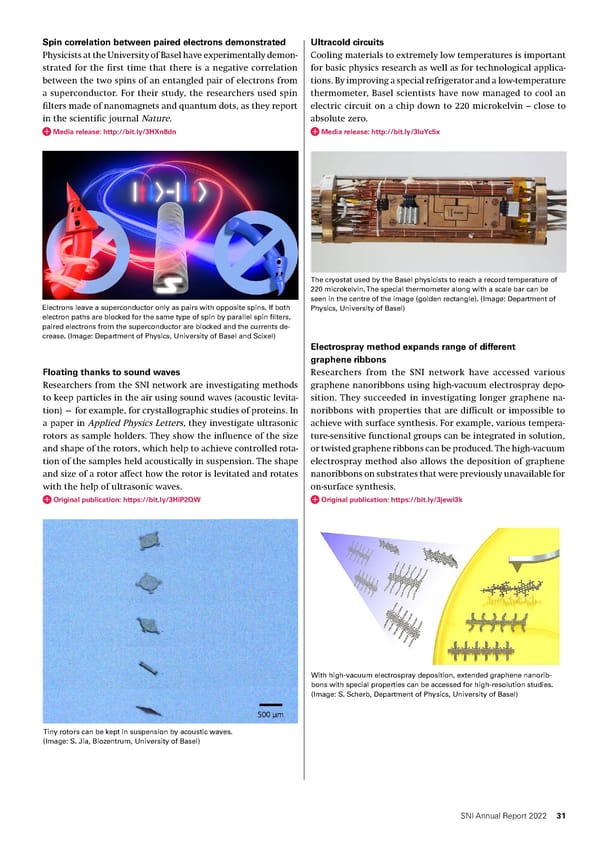Spin correlation between paired electrons demonstrated Ultracold circuits Physicists at the University of Basel have experimentally demon- Cooling materials to extremely low temperatures is important strated for the first time that there is a negative correlation for basic physics research as well as for technological applica- between the two spins of an entangled pair of electrons from tions. By improving a special refrigerator and a low-temperature a superconductor. For their study, the researchers used spin thermometer, Basel scientists have now managed to cool an filters made of nanomagnets and quantum dots, as they report electric circuit on a chip down to 220 microkelvin – close to in the scientific journal Nature. absolute zero. Media release: http://bit.ly/3HXn8dn Media release: http://bit.ly/3luYc5x The cryostat used by the Basel physicists to reach a record temperature of 220 microkelvin. The special thermometer along with a scale bar can be seen in the centre of the image (golden rectangle). (Image: Department of Electrons leave a superconductor only as pairs with opposite spins. If both Physics, University of Basel) electron paths are blocked for the same type of spin by parallel spin filters, paired electrons from the superconductor are blocked and the currents de- crease. (Image: Department of Physics, University of Basel and Scixel) Electrospray method expands range of different graphene ribbons Floating thanks to sound waves Researchers from the SNI network have accessed various Researchers from the SNI network are investigating methods graphene nanoribbons using high-vacuum electrospray depo- to keep particles in the air using sound waves (acoustic levita- sition. They succeeded in investigating longer graphene na- tion) — for example, for crystallographic studies of proteins. In noribbons with properties that are difficult or impossible to a paper in Applied Physics Letters, they investigate ultrasonic achieve with surface synthesis. For example, various tempera- rotors as sample holders. They show the influence of the size ture-sensitive functional groups can be integrated in solution, and shape of the rotors, which help to achieve controlled rota- or twisted graphene ribbons can be produced. The high-vacuum tion of the samples held acoustically in suspension. The shape electrospray method also allows the deposition of graphene and size of a rotor affect how the rotor is levitated and rotates nanoribbons on substrates that were previously unavailable for with the help of ultrasonic waves. on-surface synthesis. Original publication: https://bit.ly/3HiP2QW Original publication: https://bit.ly/3jewI3k With high-vacuum electrospray deposition, extended graphene nanorib- bons with special properties can be accessed for high-resolution studies. (Image: S. Scherb, Department of Physics, University of Basel) Tiny rotors can be kept in suspension by acoustic waves. (Image: S. Jia, Biozentrum, University of Basel) SNI Annual Report 2022 31
 SNI Annual Report 2022 Page 30 Page 32
SNI Annual Report 2022 Page 30 Page 32